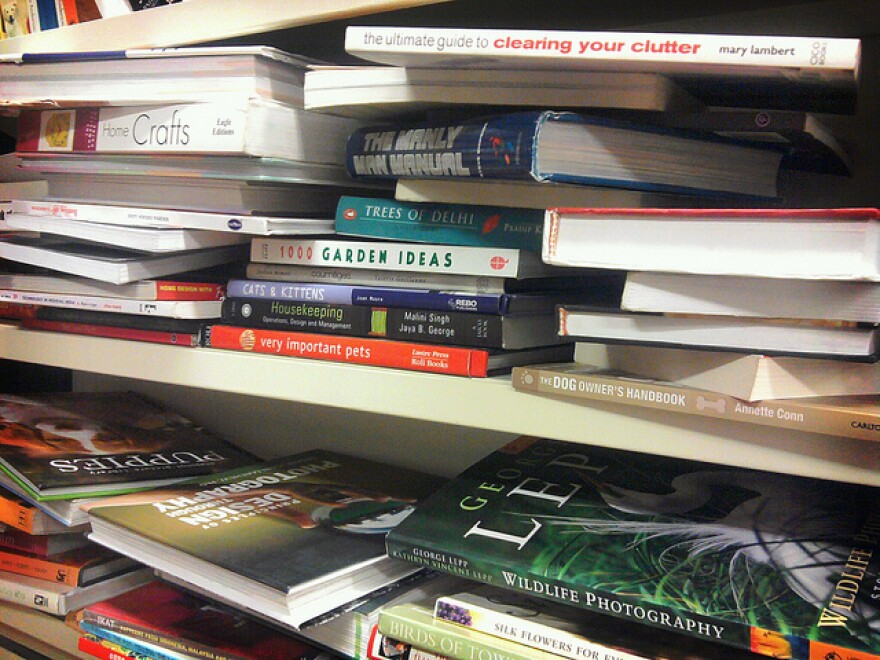It comes in many different forms and can show up in many different places — on top of something, under something, around something, inside of something. Clutter can essentially happen just about anywhere. While this description may sound a bit scary, one psychologist insists it’s not as scary as many people may think.
This week on Take Care, Dr. Robin Zasio discusses how to manage clutter. Zasio is clinical psychologist who specializes in anxiety disorders. She has appeared on the A&E reality television show Hoarders, and is the author of The Hoarder in You: How to Live a Happier, Healthier, Uncluttered Life.
Click 'Read More' to hear our interview with Dr. Zasio.
Clutter is something many people deal with. While it is not as severe as compulsive hoarding, the issue dealt with on Hoarders, Zasio believes that clutter falls on the same continuum, and that people who are dealing with clutter can learn from those dealing with compulsive hoarding in how they “engage in those same behaviors of procrastination and avoidance.”
Zasio insists that the “decluttering” process is not as difficult or stressful as people imagine, and that it can actually better one’s mental health. “I’m of the mind that physical clutter creates emotional clutter,” she says.
The first step is to stop procrastinating and avoiding the problem and make a conscious decision to clean up the place of clutter — whether it’s a coffee table that’s covered in magazines or a closet that has clothes piled in it.
“You are going to feel so much more emotionally free,” says Zasio. “It takes a lot less time to start going through the smaller piles than if you keep putting them off, because the emotional clutter in your mind that builds up is a weight for a person.”
Zasio suggests making a group project—or even a date—out of the decluttering process. By having other people help, and helping other people with their clutter, it makes the job much easier.
Some people have a hard time getting rid of items because they attach a sentimental value to it. “Make a plan,” says Zasio about these items. If a person forgets about these items until they physically appear, Zasio says that’s a good indicator that it’s okay to let it go.
One thing Zasio says is important to remember is that while items do hold sentimental value, it is the mind, not the item, which actually holds the memory. “As a society we hold on to things because we fear that if we let go of the item, then we are going to forget the memory,” says Zasio. If one has to hold on to an item for sentimental purposes, Zasio says to actually find a way to honor the item instead of letting it contribute to clutter.
Zasio says that the two most common mistakes people make when decluttering are not going through things thoughtfully enough, and going through things too thoughtfully. While these mistakes are opposite of each other, Zasio says remaining realistic is the key.
Another thing Zasio notes is that people often have anxiety about accidentally throwing out something important while decluttering. “Often times people hold on to things because they fear they’re going to regret it and they’ll never be able to let go of that regret,” says Zasio. What she has found in her work though, is that this fear is often much worse than what somebody will feel when they really do accidently let something go. “Typically, that anxiety is not as bad as we might have anticipated on the front end.”
The most important thing to keep in mind when dealing with clutter, according to Zasio, is how you want to feel. “The most important thing is looking at your environment and saying ‘what kind of environment do I want to have that I can honor my stuff and walk in my house every day and feel emotionally and physically clutter-free?’” says Zasio.



